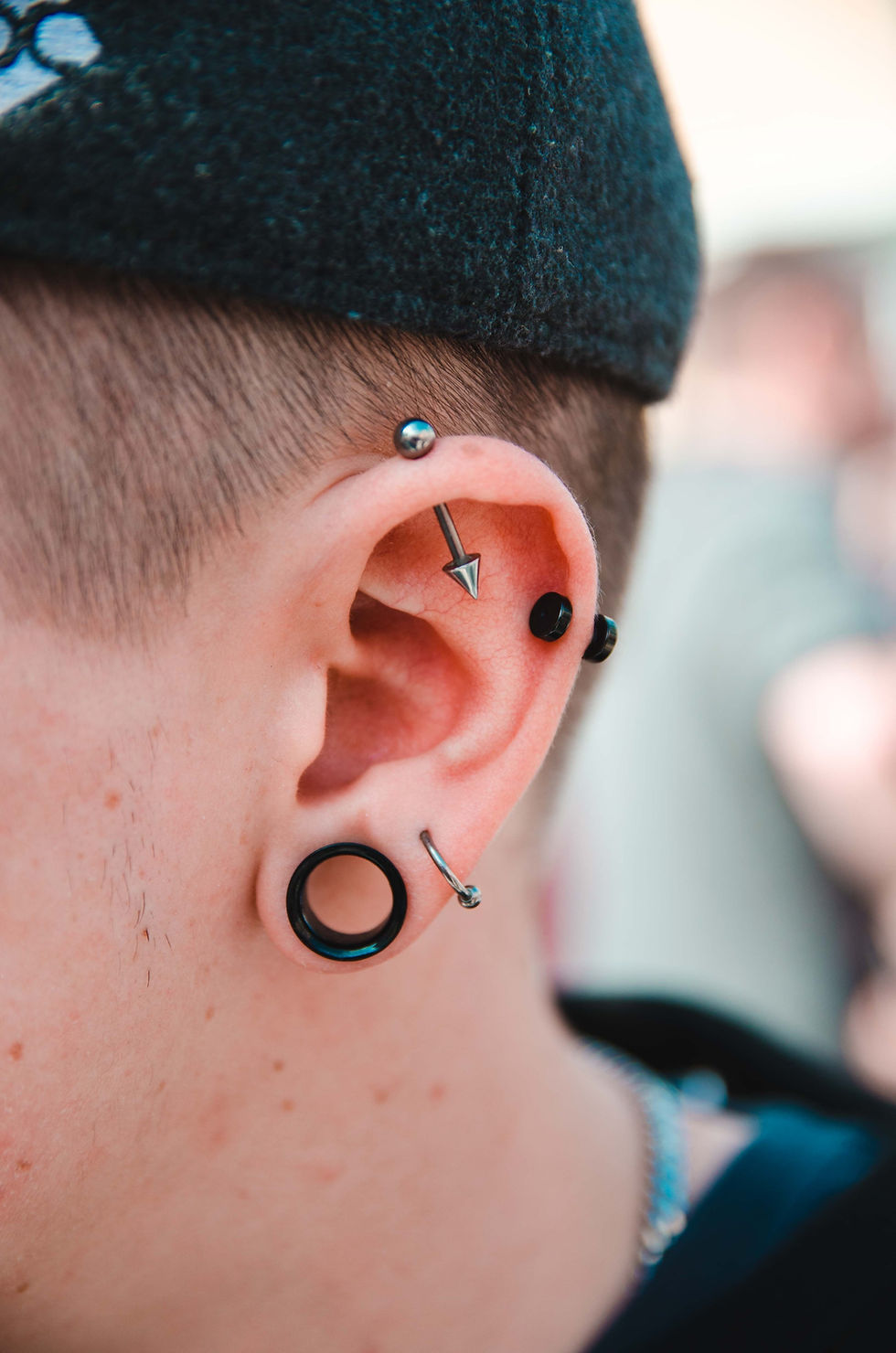Acupuncture and the Somatosensory Cortex: How Ancient Therapy Rewires the Brain for Pain Relief
- Dr Andres Damian Gonzalez L.Ac

- Sep 17, 2024
- 3 min read

Acupuncture, an ancient practice rooted in Traditional Chinese Medicine, is increasingly being understood through the lens of modern neuroscience. Recent research has uncovered that acupuncture can significantly impact the brain's somatosensory cortex, potentially offering relief to those suffering from chronic pain. This article explores how acupuncture "rewires" the brain by stimulating the somatosensory cortex and addresses how this relates to chronic pain conditions where this brain region is often compromised.
The Somatosensory Cortex and Chronic Pain
The somatosensory cortex, located in the parietal lobe of the brain, is crucial for processing sensory information from the body. This region helps create a map of the body's sensations, allowing us to accurately perceive touch, pain, temperature, and body position. In individuals with chronic pain, research has shown that this map can become distorted or imbalanced—a phenomenon often described as a "blurred map."
1. Distortion in Chronic Pain Conditions
Chronic pain conditions like fibromyalgia or complex regional pain syndrome are associated with changes in the somatosensory cortex. Studies have revealed that these changes can lead to a distorted or exaggerated sensory map. For instance, a study by Kubanek et al. (2021) found that patients with chronic pain exhibit altered somatosensory cortex activation, which corresponds to an inaccurate representation of sensory input (Kubanek et al., 2021). This imbalance can result in heightened pain perception and discomfort even in response to normally non-painful stimuli.
2. Acupuncture’s Role in Rewiring the Brain
Acupuncture has been shown to influence brain activity and potentially "rewire" the somatosensory cortex. The practice involves inserting fine needles into specific points on the body, which, according to modern neuroscience, stimulates the central nervous system. A study by **Hui et al. (2019)** demonstrated that acupuncture can modulate brain activity in the somatosensory cortex, suggesting a potential mechanism for pain relief by restoring a more accurate sensory map (Hui et al., 2019).
Mechanisms Behind Acupuncture’s Effects
Acupuncture's effects on the somatosensory cortex can be explained through several mechanisms:
3. Modulation of Cortical Representation
Research has shown that acupuncture can alter the cortical representation of sensory input. Lee et al. (2022)** conducted functional MRI studies revealing that acupuncture leads to changes in the somatosensory cortex's activity, effectively recalibrating the brain's sensory map and improving pain perception (Lee et al., 2022). This realignment helps reduce the distortion and imbalance often seen in chronic pain conditions.
4. Neuroplasticity and Pain Relief
Neuroplasticity, the brain's ability to reorganize itself by forming new neural connections, plays a key role in how acupuncture impacts pain. A study by **Wu et al. (2020)** highlighted that acupuncture-induced changes in the brain’s plasticity contribute to its therapeutic effects. By stimulating the somatosensory cortex, acupuncture promotes neuroplastic changes that may help in restoring a more accurate sensory map and reducing pain (Wu et al., 2020).
Clinical Implications and Future Directions
The understanding of acupuncture’s impact on the somatosensory cortex opens up new possibilities for treating chronic pain. By addressing the underlying neurological imbalances, acupuncture could serve as a complementary approach to traditional pain management strategies. However, more research is needed to fully understand the mechanisms at play and optimize treatment protocols.
5. Integrating Acupuncture with Modern Pain Management
Integrating acupuncture with conventional pain management approaches could enhance therapeutic outcomes for patients with chronic pain. A comprehensive review by **Vickers et al. (2023)** emphasized the potential benefits of combining acupuncture with other treatments to address both the physiological and neurological aspects of chronic pain (Vickers et al., 2023). Future studies should continue to explore this integrative approach, refining techniques and protocols to maximize efficacy.
Conclusion
Acupuncture offers a fascinating example of how traditional therapies can align with contemporary neurological understanding. By stimulating the somatosensory cortex, acupuncture appears to have the potential to "rewire" the brain, improving the sensory map and offering relief to those with chronic pain. Continued research will be essential in fully uncovering these mechanisms and harnessing acupuncture’s potential in pain management.
References:
1. Kubanek, J., et al. (2021). "The Somatosensory Cortex in Chronic Pain: A Review of the Evidence." *Journal of Pain Research*.
2. Hui, K. K. S., et al. (2019). "Acupuncture Modulates the Cortical Representation of Sensory Input." *NeuroImage*.
3. Lee, J. H., et al. (2022). "Recalibration of the Sensory Map by Acupuncture: Functional MRI Evidence." *Pain Medicine*.
4. Wu, G. C., et al. (2020). "Neuroplasticity and Acupuncture: Insights into Chronic Pain Management." *Frontiers in Neuroscience*.
5. Vickers, A. J., et al. (2023). "Integrative Approaches to Pain Management: Combining Acupuncture with Conventional Therapies." *Journal of Complementary and Integrative Medicine*.



Comments